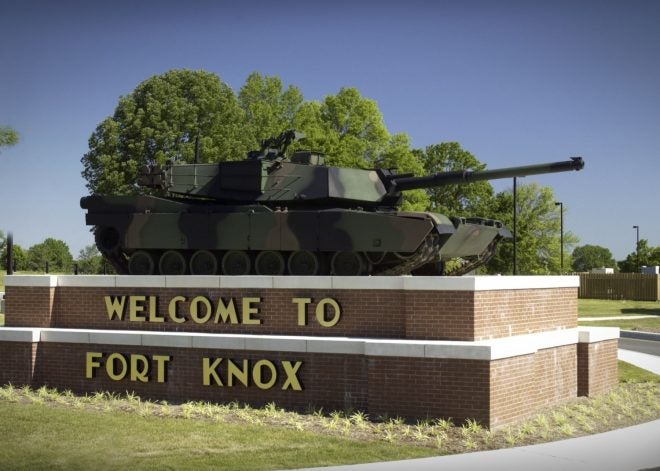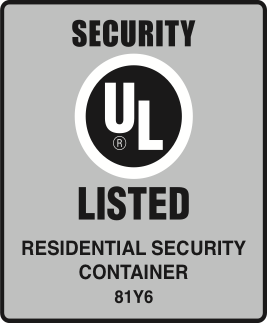Regardless of whether you own firearms for recreation, sport, or defense, it is a fact of life that any gun is an attractive target for theft. For the most part, gun enthusiasts would rather keep discussions within a comfortable zone of topics about technical and aesthetic characteristics of the guns themselves, but from time to time it is necessary to sober up and talk about theft prevention and mitigation. No, it’s not always fun to talk about the possibility of someone else entering your home or domicile and taking that which is not rightfully theirs, but that is what we will be tackling today.
Before we begin, a note: This subject is too technical and too far outside my area of expertise for me to cover in detail; therefore I will give just a basic introduction to the subject and leave it at that. However, fortunately there are some excellent sources out there which readers can use as a follow up for more information. On the Internet, I would recommend the absolutely stand-out website GunSafeReviewsGuys.com, an virtually peerless (so far as I know) resource that gives readers straight answers regarding security and protection of guns and other valuables. Locally, readers can also find more information as well as in-person assistance from your local reputable locksmith or safe dealer. Look around for smiths who regularly deal with recovered or burgled safes; they will have a keen understanding of what security measures will best protect your home and your valuables from theft. In my case, I contacted the excellent Loksafe Services, Inc, in Shreveport, Louisiana for information on this subject. They not only deal in safes and provide locksmith services, but also recover and repair safes for customers. At their location, I received first-hand insight into home and safe security. I would definitely recommend contacting similar locksmith services in your area, as their services can be invaluable for selecting the right amount of protection for your firearms and valuables.
The first thing I would consider when planning to augment your home security with a safe is a simple question: What do I plan to protect against? It is an unfortunate fact that it will be impossible for anyone reading this to prevent absolutely all potential methods of attack. Even fortified central banks protected by concrete several feet thick have been successfully breached and burgled, proving that if thieves are intelligent and determined enough, and have enough time to plan and execute their attack, virtually no degree protection is enough to stop them. As a homeowner, then, you might ask yourself just who it is you think might want access to your weapons and valuables without your permission? To help in answering this, here are some plausible examples:
- “Smash and grab” burglars armed with simple hand tools
- Neighborhood kids with access to the home
- Untrustworthy home repair workers and technicians
- Professional thieves armed with power tools
- Persons with mental illness
- Curious children
Some of these are more practical to protect against than others. If you are primarily concerned with preventing access to your firearms to curious children and neighborhood kids, a simple set of lockers might be sufficient for this. A hidden or concealed reinforced locker or low level safe might also be enough to protect against smash and grab burglars or untrustworthy home repairmen looking for an easy score, but this would not be enough to stop professional thieves with power saws and other tools for hardly any time at all. To prevent theft of that kind, the firearms would have to either be exceptionally well concealed, or stored in a high quality hardened (and therefore expensive) safe fixed to the structure of the building. Ultimately, it is up to you to decide which level of protection you think you need for your firearms and valuables, and plan accordingly.
This then raises the question: What levels of protection are the most cost effective at a given budget? There’s no simple answer, but I would outline a handful of “tiers” of protection (based on cost) that reflect some of the most promising suggestions I’ve seen:
Free: Simple security measures that don’t cost anything. Examples: Keeping your guns a secret from neighbors by not showing them off and concealing them to and from the range, unlisting your home address and phone number, using anonymity on Internet gun forums, hiding firearms in unlikely places etc. These methods typically center around keeping the fact that you own guns a secret from the public.
DIY: Sometimes the best solution may be to secure the guns with your own elbow grease. This approach can vary in cost, of course. Simply hardening a closet against attack will cost a lot less than building an exacting replica of Fort Knox to protect your priceless gun collection, but this is nevertheless an option that seems to often go unrecognized.
$50-$200: In this range, you’d be buying a basic locker or Stack-On type unit to store your guns in. Calling these “gun safes” is a bit misleading, as they can be easily defeated by a burglar with a crowbar in seconds. They are generally sufficient for protecting against curiosity, however, and may also be sufficient for protection against thieves if hidden and/or secured with other reinforcements (e.g., as part of a DIY in-wall safe).
$300-$1,000: By all accounts, this is where one has to be careful. There are some good gun security solutions at this tier, but there are many others that are closer to overpriced, attractive looking lockers than real gun safes. Many “gun brand” safes fall into this category, and unfortunately provide very little protection against very basic levels of attack, despite costing hundreds of dollars. The two videos below (less than 12 minutes combined) illustrate the shortcomings of this type of safe:
At this price range, there are a few options that make sense. A well-made security cabinet can offer some additional protection and features versus lower priced lockers while omitting some of the less necessary features (such as the questionable fire protection that comes with many mid-tier safes). For a less conventional solution, a long lockable job site box can provide better protection than some “gun safes” which cost hundreds of dollars more. Although these units are not very attractive looking, they are easy to camouflage for added protection. Of course, the more usual “gun safe” is also a potential option, as long as the buyer understands what they are getting.
$1,500-$3,500: This tier is where you’ll find home safes like Sturdy, the American Security FV series, Hollon’s Blackhawk, and others. At the lower end of the price scale, these safes are not typically RSC rated. RSC rated safes provide the following protection:
Signifies a combination-locked safe designed to offer a limited degree of protection against attack by common mechanical and electrical hand tools and any combination of these means.
Construction Requirements
* U.L. listed Group II combination lock or Type 1 electronic lock.
* Door material equivalent to at least 3/16″ open hearth steel.
* Body walls of material equivalent to at least 12 gauge open hearth steel.
Performance Requirements
The door successfully resist entry for a net working time of 5 minutes when attacked against rigorous prying, drilling, punching, chiseling, and tampering attacks by UL technicians.
Note that this is a very, very modest amount of security, and not at all “complete protection” against prepared burglars with inexpensive hand tools. However, it is considerably more protection against direct attack than any of the less expensive options offer.
$4,000+: This is less a “tier” than the threshold where true safes begin. At this level, we see Sage ratings B and C, and Underwriter Laboratories ratings of TL-15 (equivalent to Sage rating E) and TL-30 (equivalent to Sage rating F). Keep in mind that safes at this tier will uniformly be extremely heavy (over 1,000lbs) and may be difficult or impossible to transport if you need to move. It should also be noted that for handguns and smaller valuables, safes with the same ratings as the gun safes in this tier are available at a lower cost (and lower weight).
Which of these options is best for you? That will of course depend on your situation, but in all likelihood the best approach would be a combination of improved security practices, better home security (e.g., better door locks and a home alarm system), and some additional security measure for the guns and valuables themselves, like a jobsite box or true safe.
For further reading, I highly recommend GunSafeReviewsGuy and your local locksmith/safe repairman as previously mentioned. Also, there is a lot of material on YouTube about home security and gun safes, and many channels are well worth your time and effort to watch. One of my favorites for more general security tips is Mr. Locksmith, but it’s also worth checking out the channels of gun safe companies themselves, as they often test other brands’ safe models.
As a parting note, I urge my readers not to just read this article and think they have the whole picture. I could not do the subject justice even if I made it into a multi-part series that was thousands of words long. Instead, my hope is that this article gives you a better starting place than I had when I first began looking into this subject, and saves you a lot of time and perhaps even money by directing you towards what I believe are the best resources on the Internet and in the real world regarding gun safes. A tremendous amount of nonsense has been written about this subject, and when I first tackled it I quickly became bogged down in fact-free “reviews” that concluded little more than “[name brand] safe is heavy and looks nice”. Sifting through (literally) hundreds of articles, I became frustrated with the subject as a whole, which put me off doing the research that I really needed to do. With luck, I’ve spared you the experience!
 Your Privacy Choices
Your Privacy Choices

